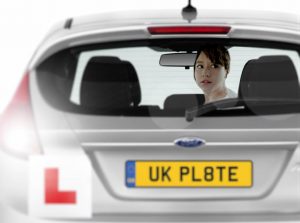Many learner drivers ask ‘Can I use the reversing camera on the driving test?‘ The answer is yes, of course. Reversing cameras are a driver’s aid which help to make parking manoeuvres easier and perhaps a little safer as they provide a view from immediately behind your vehicle – something which cannot be seen in your mirrors or by physically looking behind.
The practical driving test is always updated to make use of new technology that arises in cars, however, there is a but coming… Total reliance on the reversing camera’s screen will almost certainly result in a test failure.
There’s two key points to successfully reversing (for any reason) during the practical driving test. These are to always look in the direction you intend on moving and effective all-round observation.
Look in the Direction You intend on Moving
If you were to move off from a set of traffic lights, it might seem a little hazardous if you were to do so whilst looking at anything other than in the direction you’re moving – which is of course out of the front windscreen.

Yet many learners fail the driving test because they start reversing whilst staring in mirrors or reversing screens. Here’s what you need to do:
- Prepare the car ready in reverse
- Check all-round, starting from the left blind spot, left mirror, internal mirror, look ahead, right mirror and finishing with right blind spot
- If all is safe to proceed, physically turn to look out of the rear window
- Begin slowly reversing
After a couple of seconds of looking out of the rear window, continuous all-round observation is essential. To maintain accuracy and control of the vehicle whilst simultaneously looking around is to keep the speed of the vehicle very slow using clutch control or if driving an automatic, by allowing it to creep backwards while maintaining gentle pressure on the foot brake. You can momentarily check the reverse camera’s screen if you wish, just don’t stare at it for too long.
Effective All-Round Observation
Reversing on the driving test can involve:
To successfully complete a manoeuvre, you’ll be expected to complete it accurately, whilst maintaining control of the vehicle and at a speed that allows you to do so whilst maintaining continuous effective all-round observation.
Effective means to react to any potential or actual hazards that you observe.
All-round observation means to physically look around the vehicle 360 degrees including the use of the mirrors.
Do I Have to Use the Reversing Camera?
If you don’t really want to use the reversing camera, just don’t look at the screen or if you’d prefer, switch it off – the examiner wont mind. Just make sure you don’t stare at it too much or for too long if you do use it.
